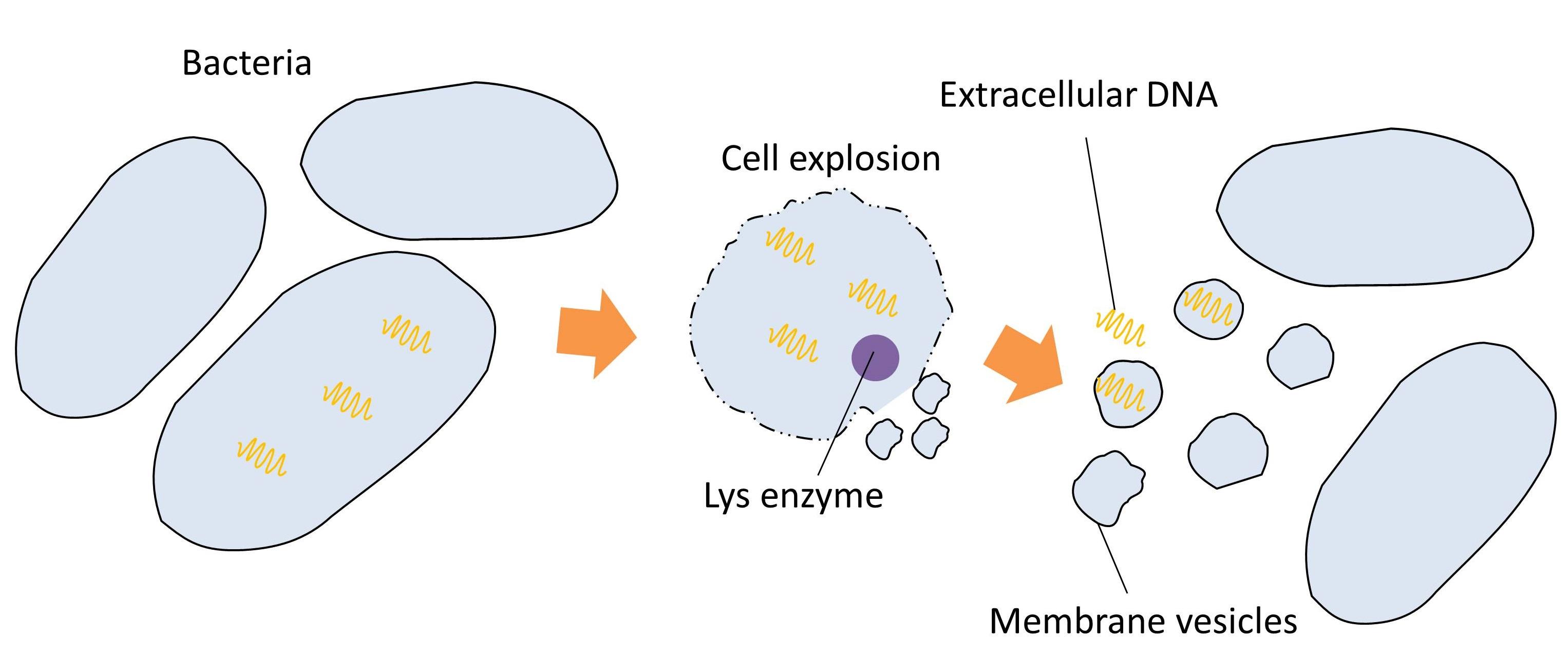Research News
Newly Identified Cell Explosions Involved in Bacterial Secretion and Adherence
A multinational team led by researchers from the University of Technology Sydney, University of Tsukuba, and University of Zurich show explosive cell lysis as a novel mechanism for bacterial membrane vesicle production and contributor to biofilm formation
Tsukuba, Japan—Researchers have been unclear on how bacteria form and release certain extracellular components involved in cell adhesion and multicellular structures that also contribute to antibiotic resistance. However, a recent study from a multinational team of researchers identified a previously unknown phenomenon, explosive cell lysis, as crucial in the production of membrane vesicles and biofilm formation. The study was reported in Nature Communications.
Membrane vesicles are tiny spheres that develop from bacterial membranes and contain a mixture of proteins, DNA, and RNA. They are important for the virulence of the bacterium—its ability to cause disease—as they play vital roles in invasion, secretion, and signaling. They also contribute to the formation of biofilms, the slimy three-dimensional structures that form when bacteria adhere to moist surfaces such as teeth or wounds. Extracellular (e)DNA is a key structural organization of biofilms, yet it was not known how certain structural proteins or eDNA are released.
To answer this, the researchers used live cell microscopy of the pathogenic bacterium Pseudomonas aeruginosa to reveal that cells quickly changed from rod- to round-shaped, and explode. "Cells lose their structural integrity in 5-10 seconds," corresponding author Cynthia Whitchurch of the University of Technology Sydney explains, "and the explosion releases cellular content including eDNA, proteins, and membrane fragments into the surrounding environment."
Using super-resolution microscopy to follow the explosions, they found a surprising observation described by first author Lynne Turnbull: "We observed that membrane fragments produced by exploding bacteria curled up to form membrane vesicles that captured eDNA and other cellular components released by the explosion."
Co-corresponding and co-first author Masanori Toyofuku of the University of Tsukuba and University of Zurich explains that, "this was completely unexpected as until now bacterial membrane vesicles were thought to form from membranous protrusions at the cell surface."
The team found that the explosions are caused by an enzyme (Lys) used by bacteria-infecting viruses (phages) and phage-like elements to disrupt the cell wall of their hosts. Using a mutant bacterial strain incapable of producing Lys, they discovered that the enzyme was needed to produce eDNA and membrane vesicles.
Through a range of experiments, the team also demonstrated that exposure of cells to different forms of stress, such as antibiotics or DNA damaging agents, stimulated expression of the gene encoding Lys and induced explosive cell lysis. "This shows that the bacterial 'SOS' response triggers explosive cell lysis in response to unfavorable environmental conditions," co-corresponding author Leo Eberl of the University of Zurich says.
This mechanism may enable bacteria to release important cellular factors for use by bacterial communities as public goods, and knowledge of its control could be used to interfere with biofilm formation of pathogenic bacteria.
The article, "Explosive cell lysis as a mechanism for the biogenesis of bacterial membrane vesicles and biofilms" was published in Nature Communications at DOI: 10.1038/ncomms11220

Exploding cells spill cell contents
Bacteria cells change from a rod-like to spherical shape before exploding controlled by the Lys enzyme. Cell membrane fragments curl up to form vesicles and extracellular DNA are released, which can interact with other cells.



